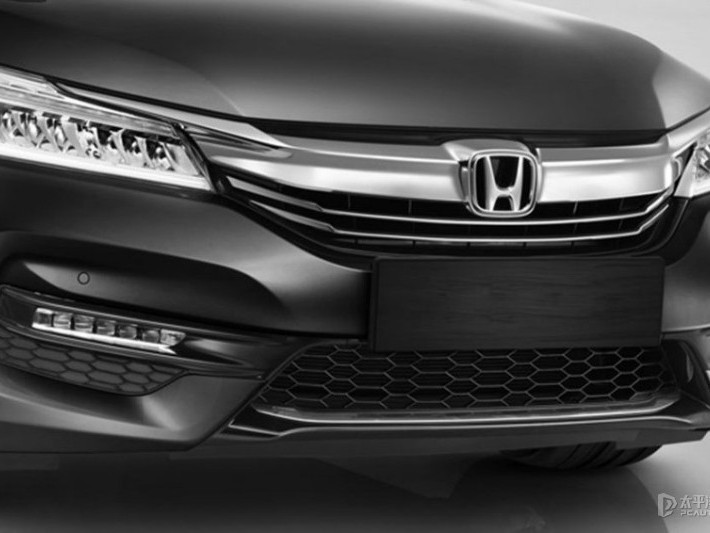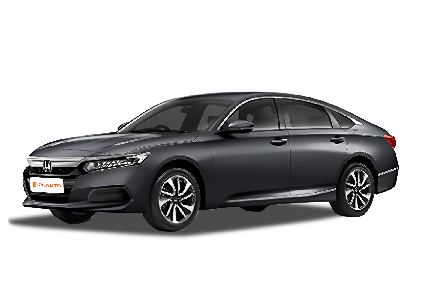Q
What is the Honda Accord Engine Oil Capacity?
The engine oil capacity of the Honda Accord varies depending on the specific year and engine model. For example, models equipped with a 1.5L turbocharged engine from 2018 to 2022 usually require about 3.7 to 3.8 liters of oil (including filter replacement), while the 2.0L hybrid version needs about 4.2 liters. It is recommended that car owners refer to the vehicle user manual or check the actual oil level through the dipstick in the engine compartment.
In Malaysia's hot and rainy climate, it's particularly important to regularly check the oil condition because high temperatures may accelerate oil deterioration. It is advisable to follow the original - factory recommended maintenance cycle (usually every 10,000 kilometers or 6 months) and use fully synthetic oil that meets the Honda API SP/GF - 6 standard. This type of oil has better high - temperature stability and cleaning performance.
If you change the oil by yourself, make sure to operate when the vehicle is cold. Ensure that the old oil is completely drained before pouring in new oil to the middle position of the dipstick. Both overfilling and underfilling may affect engine performance. At the same time, it is recommended to replace the original - factory oil filter synchronously to ensure the filtering effect.
For newer Accord models, the oil life monitoring system will prompt the replacement time based on driving habits and road conditions. However, regular manual checks are still a necessary maintenance practice.
Special Disclaimer: This content is published by users and does not represent the views or position of PCauto.
Related Q&A
Q
What is lane assist on Honda Accord 2023?
The Lane Assist system in the 2023 Honda Accord is an advanced driver-assist feature. It uses a camera to track the vehicle's position within the lane and provides gentle steering assistance or vibration alerts if you start to drift unintentionally, helping you stay centered. This is especially handy for Malaysia's highways or long drives, really cutting down on fatigue and boosting safety. It usually pairs with Adaptive Cruise Control (ACC) for a semi-autonomous driving feel, but you still need to keep your hands on the wheel and be ready to take over. Important to note, this isn't full self-driving—its performance depends on things like weather and how clear the lane markings are, so always stay focused. In the Malaysian market, you'll typically find this feature on higher-spec Accord models, working alongside other systems in the Honda Sensing suite like Collision Mitigation Braking System (CMBS) and Road Departure Mitigation (RDM) to give local drivers more comprehensive protection.
Q
Does the 2023 Honda Accord show tire pressure?
The 2023 Honda Accord does come with a Tire Pressure Monitoring System (TPMS) that shows real-time pressure readings for each tire. Drivers can check the specific numbers on the instrument cluster or center display screen. This feature is especially handy in Malaysia's hot climate and for long drives, since high temperatures can cause tire pressure to spike unexpectedly—keeping an eye on it helps prevent blowouts. Plus, the system usually warns you if the pressure gets too low or too high, prompting you to check the tires. For Malaysian users, regular pressure checks don't just boost safety; they also improve fuel efficiency and tire lifespan. It's a good idea to manually check the pressure at least once a month, especially when temperatures swing a lot. Make sure to adjust according to the recommended levels listed in the owner's manual or on the door jamb. If you notice frequent pressure issues, it might mean a leaky tire or a faulty sensor—best to head to an authorized service center to get it checked out.
Q
How do you auto start a Honda Accord 2023?
If the 2023 Honda Accord in the Malaysian market is equipped with remote start, it can be operated via the smart key or mobile app. Here's how: first press the lock button to ensure the doors are locked, then hold down the remote start button on the key (usually a circular arrow icon) for about 2 seconds. Once the engine starts, the air conditioning system will automatically activate to adjust the cabin temperature – super useful in hot weather. It's important to note that the vehicle needs to be in Park (P) and have sufficient fuel for a successful start. Some models may require activating the HondaLink mobile app and subscribing to relevant services first. For models not equipped with this feature as standard, it's recommended to have Honda authorized dealers install original accessories to ensure compatibility and avoid potential electrical risks from self-modification. Remote start technology has now become a common feature in mid-to-high-end models. Besides convenience, it also enhances driving comfort by pre-cooling or pre-heating the cabin. However, owners should be aware of Malaysia's laws regarding idling time; it's generally advised to get in and operate the vehicle within 10 minutes of remote starting, which is both environmentally friendly and compliant with regulations. Different brands implement this feature slightly differently, so it's advisable to read the owner's manual carefully or consult local Honda dealers for accurate information.
Q
How do I turn off traction control on my 2023 Honda Accord?
To turn off the Traction Control system on a 2023 Honda Accord, start the vehicle first. Then, look for the button labeled "VSA" or featuring the traction control icon, usually located on the left side of the steering wheel or on the center console. Press and hold it for about 3 seconds until "Traction Control Off" or a similar message appears on the dashboard. It's important to note that with traction control off, the vehicle may lose some stability on slippery roads or during hard acceleration. So, it's recommended to only turn it off temporarily for specific situations, like getting unstuck from mud or snow—keep it on for regular driving to stay safe. Malaysia's rainy climate means slippery roads are common, and traction control really helps prevent wheel spin and boost driving safety. If you're curious about other driver-assist features, like lane keeping or adaptive cruise control, check the owner's manual or ask a Honda authorized dealer for more details.
Q
Does your 2023 Honda Accord have anti-lock brakes?
The 2023 Honda Accord does come with an Anti-lock Braking System (ABS), which is one of the standard safety features in modern cars. It effectively prevents the wheels from locking up during emergency braking, helping drivers maintain steering control—something that’s especially crucial on Malaysia’s rainy, slippery roads. Beyond ABS, the 2023 Accord also packs Electronic Brakeforce Distribution (EBD) and Brake Assist (BA). These technologies work together to further boost braking performance and overall safety. In Malaysia, a lot of car buyers really care about these active safety features because they can significantly cut down accident risks in unexpected situations. The Honda Accord, being a popular midsize sedan, has always had a pretty comprehensive set of safety gear that meets major global safety standards, making it a solid choice for Malaysian families or business use. For safety-conscious consumers, getting to know a car’s braking system and other safety tech is a must—these features often make a big difference when it matters most.
Q
How to turn off parking sensors on Honda Accord 2023?
To turn off the parking sensors on a 2023 Honda Accord, press the "Parking Sensor" button near the center console (usually marked with a "P" and sound wave icon). The exact location might vary by trim level; some models require using the infotainment system—just go into Vehicle Settings and select "Driver Assist" or "Safety Features" to disable them. It's worth noting that Malaysia's hot and rainy weather can affect sensor sensitivity, so occasional false alerts are normal. We recommend regularly cleaning dirt or water spots off the sensor surfaces to keep them working their best. If you're getting frequent false triggers, reach out to a Honda Malaysia authorized service center. This isn't a malfunction—it's just how electronic systems behave in extreme environments. Other models like the Toyota Camry or Mazda 6 use similar setups, with slight differences in operation but the same basic principle. Temporarily disabling the sensors won't affect other safety features like the rearview camera or blind spot monitoring. The system will usually reset to default "on" when you restart the car, which is good for safety.
Q
How to turn off lane assist on 2023 Honda Accord?
To turn off the Lane Assist on the 2023 Honda Accord, you can use the buttons on the right side of the steering wheel to access the vehicle settings menu. Look for the "Driver Assist Systems" option, then select "Lane Keeping Assist" and switch it off. The exact steps might vary slightly depending on the vehicle's configuration or regional version, so it's best to check the owner's manual or consult a local Honda dealer in Malaysia for precise guidance. Lane Keeping Assist is part of Honda's Honda Sensing safety suite, which uses a camera to monitor lane lines and provides steering correction alerts if the vehicle drifts. It's handy for highways or long drives, but some drivers might prefer to turn it off manually on city roads or in special road conditions. Keep in mind that when you disable it, a notification icon usually appears on the dashboard, and the system might default to being on when you restart the car, so you'll need to repeat the process each time you want it off. In Malaysia, many new cars come with similar driver assist tech—different brands might have different operating logic, but the main goal is all about boosting driving safety. It's recommended that drivers use these features flexibly based on actual road conditions and personal habits.
Q
How do I turn off automatic braking on my 2023 Honda Accord?
To turn off the automatic braking on a 2023 Honda Accord, you can navigate to the vehicle settings menu, find the "Driver Assist Systems" option, then select "Collision Mitigation Braking System (CMBS)" and switch it off. Here's how: After starting the car, use the buttons on the right side of the steering wheel to access the instrument cluster menu. Choose "Vehicle Settings," go into "Safety Support," locate "Collision Mitigation Braking System," and select "Off." It's important to note that automatic braking is a crucial safety feature that effectively reduces collision risks. It's recommended to only turn it off temporarily in special situations and keep it enabled during regular driving for safety. For Malaysian drivers, the local rainy weather and complex traffic conditions make this feature even more vital—it can automatically intervene when the driver doesn't react in time, lowering accidents caused by poor visibility or sudden incidents. If you have questions about other driver assist features like lane keeping or adaptive cruise control, check the owner's manual or consult an authorized Honda dealer. They can provide more detailed operation guidance and technical support.
Q
How to turn on cruise control on Honda Accord 2023?
To activate Adaptive Cruise Control on the 2023 Honda Accord, first make sure the vehicle is started and traveling above 40 km/h. Then press the "MAIN" button on the right side of the steering wheel to power up the system—you’ll see a white cruise icon pop up on the dashboard. When you hit your desired speed, press the "SET/-" button to lock it in; the icon turns green, meaning cruise control is now active. To adjust speed, tap the "+" or "-" buttons for 1 km/h increments, or hold them down for 10 km/h jumps. If you need to pause, just tap the brake pedal or hit "CANCEL"; to resume, press "RES/+" to get back to your set speed.
It’s worth mentioning the 2023 Accord comes standard with Honda Sensing, which includes Lane Keeping Assist (LKAS). Flip that on too, and you’ll get a semi-autonomous driving feel—but keep your hands on the wheel and eyes on the road, okay? Also, Malaysia’s hot and rainy weather can mess with the radar sensor’s sensitivity, so give the sensor area in the front grille a regular wipe-down to keep things working smoothly. This system really takes the edge off on highways or in traffic, but remember: it’s not fully self-driving. You still gotta step in for sudden stuff.
Q
How to turn off idle stop on Honda Accord 2023?
Here's how to turn off the Idle Stop function on the 2023 Honda Accord: After starting the vehicle, look for the button labeled "Idle Stop" (usually with a circular arrow icon) either below the center console or on the left side of the steering wheel. Press it to deactivate the feature, and you'll see the "Idle Stop Off" indicator light up on the dashboard. Just keep in mind that the system defaults to on every time you restart the car, so you'll need to do this each time. The Idle Stop technology is designed to cut fuel consumption and emissions, which is pretty handy for Malaysia's stop-and-go city traffic. But some drivers find the frequent starting and stopping a bit annoying in terms of comfort. If you keep it off long-term, you might notice a slight increase in fuel usage, so it's best to use it flexibly based on the actual traffic conditions. Honda has optimized the Accord's Idle Stop system, so it barely affects engine or starter longevity—no need to worry about durability issues. Plus, in Malaysia's hot weather, the system smartly checks the AC load and prioritizes keeping the cabin cool, so it still stays practical.
Latest Q&A
Q
How much is a 2020 Toyota RAV4 worth today?
The 2020 Toyota RAV4 is currently fetching around RM100,000 to RM140,000 on the used car market. Prices can vary depending on condition, mileage, trim level, and service history, with high-spec hybrid or top-of-the-line models potentially edging closer to RM150,000. It's a common sight locally, popular for its reliable build and low maintenance costs – especially the 2.0L naturally aspirated and hybrid variants, which stand out for fuel efficiency. The used car market generally agrees the RAV4 holds its value well. Before buying, it's smart to get a professional inspection to check the vehicle's condition and compare quotes from multiple dealers to land a fair price. Also, the current RAV4 sits on the TNGA platform, offering noticeably better handling and safety than its predecessor. If your budget allows, it's worth checking out new car deals too – some dealers might have attractive trade-in offers.
Q
What kind of engine does a 2020 RAV4 have?
The 2020 RAV4 offers two engine options depending on market and trim level: a 2.0-liter naturally aspirated four-cylinder and a 2.5-liter hybrid system. The 2.0L engine puts out around 170 horsepower, paired with a CVT transmission, focusing on fuel efficiency and smooth driving—perfect for daily city commutes. The 2.5L hybrid, on the other hand, combines a gas engine with an electric motor for a total output of 218 horsepower. It delivers even better fuel economy and adds an electronic all-wheel-drive option, balancing power with eco-friendly needs.
Toyota's Dynamic Force engine series under the hood uses advanced tech like high-speed combustion and variable cooling systems, hitting industry-leading thermal efficiency. Hybrid models also come with Toyota's fourth-gen THS-II system, which optimizes power distribution through the PCU (Power Control Unit).
Notably, the engine bay layout was redesigned to lower the center of gravity, boosting handling stability, while extra sound insulation improves NVH performance. For buyers watching long-term costs, both engines reflect Toyota's focus on durability, with reasonable maintenance intervals and easy access to replacement parts.
Q
How much should I pay for a 2020 RAV4?
The 2020 Toyota RAV4 typically ranges in price from RM90,000 to RM130,000 in the used car market. The exact price depends on factors like vehicle condition, mileage, trim level, and whether it's still under the original factory warranty. Higher-spec hybrid models or those with optional features like a panoramic sunroof will command higher prices. It's advisable to check specific listings through officially certified pre-owned channels or reputable dealers before buying. Make sure to inspect the maintenance records and accident history to ensure the vehicle is in good condition. As a popular SUV, the RAV4 holds its value relatively well, thanks to Toyota's brand reputation and the model's reliability. Its active safety systems, such as pre-collision system and lane-keeping assist, also boost its appeal. If your budget is tight, consider slightly older models with lower mileage—they offer better value for money. However, always get a professional inspection to avoid potential issues. Also, when comparing prices, don't forget to factor in additional costs like insurance, road tax, and transfer fees into your total budget.
Q
How many miles can a 2020 Toyota RAV4 last?
The 2020 Toyota RAV4 can typically hit 200,000 to 300,000 miles (around 320,000 to 480,000 kilometers) or even more with proper maintenance and regular use. Its lifespan really depends on things like driving habits, road conditions, and how often you keep up with servicing. That 2.5-liter four-cylinder engine and hybrid system are known for being tough – especially if you stay on top of oil changes, transmission fluid swaps, and keeping the cooling system clean, that’ll definitely help it go the distance. It’s worth mentioning that the hybrid battery usually lasts about 10 to 15 years, but once you replace it, the vehicle can keep rolling. In daily driving, avoiding hard acceleration and frequent sudden stops, plus checking tires, brakes, and suspension parts regularly, will cut down on wear and tear. Also, sticking to authorized repair shops and using OEM or high-quality parts for maintenance goes a long way in keeping the RAV4 performing well. If you’re driving a lot in hot or dusty environments, you’ll want to shorten the replacement intervals for the air filter and coolant to make sure the engine runs efficiently.
Q
Does the 2020 RAV4 have automatic braking?
The 2020 RAV4 does come with Automatic Emergency Braking (AEB) as part of Toyota's TSS 2.0 active safety suite. This system uses cameras and radar to detect vehicles or pedestrians ahead, automatically applying the brakes if a collision seems likely to either reduce impact severity or avoid the accident altogether. Beyond AEB, TSS 2.0 also includes adaptive cruise control, lane keeping assist, and automatic high beams—features that really boost safety in day-to-day driving. It’s worth noting, though, that AEB performance can be affected by speed, weather, and road conditions, so drivers still need to stay focused and can’t rely entirely on the system. If you’re thinking about buying a used 2020 RAV4, it’s a good idea to check that the system is working properly and find out if the previous owner made any adjustments to the settings, since some functions can be manually turned off or have their sensitivity customized. As car safety tech advances, features like AEB have become standard on many new vehicles, but system names and performance can vary a bit between brands—definitely compare and test drive a few options before making a purchase.
View MoreRelated News

Starting from RM 187,400! A Honda Accord with sufficient trunk capacity, would you consider it?
AshleyJul 19, 2024

Choose Honda HR-V or Mitsubishi XPANDER for a family car?
WilliamNov 12, 2025

Which one is better, Honda City or Toyota Vios?
AshleyNov 11, 2025

Jaecoo J7 VS Honda CR-V, which is the most worthwhile C-Segment SUV to buy
JamesNov 7, 2025

Honda City Hatchback vs. BYD Dolphin, how to choose for short-distance commuting?
Kevin WongNov 5, 2025
View More













 Cars
Cars




Pros
Cons